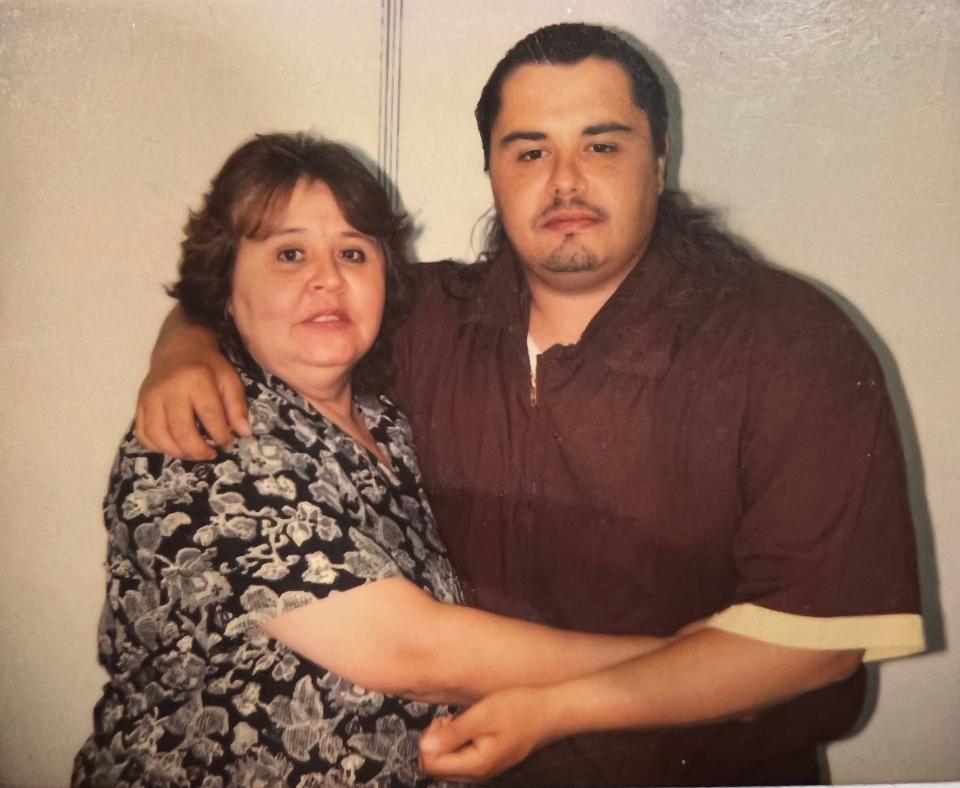'How long is long enough?': Independent task force challenges length of prison sentences in America
- Oops!Something went wrong.Please try again later.
Prisoners with long-term sentences need more opportunities to have their sentences reviewed. Lawmakers and state agencies need to identify and address racial disparities in sentencing. And the amount of a drug involved in a crime should be decoupled from the length of an offender's sentence.
Those are some of the recommendations from the authors of a yearlong study of the nation's use of lengthy prison sentences published Tuesday.
The independent task force, co-chaired by former U.S. Deputy Attorney General Sally Yates, who was appointed by President Barack Obama, and former Republican South Carolina Rep. Trey Gowdy, was convened by the nonpartisan think tank the Council on Criminal Justice and its panel of 16 experts, including former prosecutors, law enforcement officials, advocacy groups, victims and former prisoners.
Study: Federal magistrates, prosecutors misapply law, jail people who should go free
The recommendations come amid growing concern over public safety and rising homicide rates, but task force director John Maki, who has served as head of an Illinois nonpartisan prison watchdog, said it's important to look at whether long sentences are the best use of public safety dollars, especially as states consider boosting sentences.
From the 1970s through the 1990s, the U.S. saw large spikes in violent and serious crime. As a result, "the law and policy we have today is pretty much a creature of that period," Maki said.
Here are some of the highlights of the report's 14 recommendations:
More: Native American man serving 'de facto life sentence' for drug dealing
63% of state prisoners in for at least a decade
The task force examined the core dilemma of sentencing, primarily, the question of "how long is long enough" to ensure public safety once someone is released, but also to adequately punish the person who committed the crime. And once the person is ready to be released, how can they be reacclimated to society after living years in lockup.
The questions are difficult and the recommendations equally complex. But to start, the task force defined a long sentence as 10 or more years.
An analysis by the council found that 63% of people in state prisons in 2020 fit that definition, up from 46% in 2005. But as offenders' age at sentencing increased, recidivism rates also went down, according to the U.S. Sentencing Commission.

"People aging in prison are typically the most expensive populations to incarcerate," Maki said. At the same time, "we're looking at a population that is statistically the least risky population, who are stacking up in prisons."
While the task force's recommendations were generally agreed upon, co-chair Gowdy submitted comments noting that he did not consider 10 years to be long for many crimes, particularly violent ones and that while some people can and do change, others do not.
"The challenge is knowing who can change, who has changed, who cannot change, and which crimes are so grievous that the punishment should remain intact regardless of change," Gowdy said. "To the extent there is uncertainty, I will err, if at all, on the side of public safety."
'Pell for prisoners': The grants will return to prison, but for many, college will still be out of reach
Ensuring all victims have access to heal
Early on, victims' rights groups often assumed they were dealing with a population that was unrelated and had substantially different needs from those who engaged in criminal behavior. Often the services these groups provided were contingent on cooperation with law enforcement, even though some people are reluctant to report they've been the victim of a crime.
But more recent research has found that these populations often intersect, with many perpetrators of crime themselves former victims or individuals with unaddressed childhood trauma.

Many Black men in low-income communities are not only among the most victimized groups in the country, the report states, but they are also more distrustful of law enforcement and government – and therefore the least likely to gain access to victim services.
The report concludes that state and federal authorities should remove barriers and work to ensure all victims and survivors of serious and violent crimes have access to mental health and other services.
As funds are freed up by the reduction of long sentences, the task force recommends states and the federal government redirect money to community organizations that use evidence-based strategies to prevent violence and support victims.
Report: Prison, jail staff rarely face legal consequences after sex abuse of inmates
Focusing on prisoners as individuals
Many of the recommendations focus on ensuring prisoners aren't treated uniformly but are dealt with as individuals, such as requiring sentencing enhancements that look at an individual's risk of reoffending without automatically relying on prior criminal history. A reliance on prior records has been found to exacerbate racial disparities in prison populations.
Other recommendations include:
Ensuring prisoners receive needed behavioral health services to understand and address unresolved trauma to prevent recidivism and improve their ability to return to society.
Decoupling drug quantity from sentence lengths and focusing on the behavior itself. The task force recommends authorities prioritize long sentences for serious and violent crimes and instead use evidence-based programs and strategies to tackle cases that involve substance abuse or mental health disorders.
Amy Fettig, executive director of The Sentencing Project and task force member, suggested additional reform measures in the addendum, including the elimination of mandatory sentences for all crimes, which she noted goes beyond the 14 recommendations all task force members signed onto.
"Mandatory minimum sentences, habitual offender laws and mandatory transfer of juveniles to the adult criminal system give prosecutors too much authority while limiting the discretion of impartial judges, and disproportionately imposing unduly harsh sentences on Black and Latinx individuals," Fettig said.
Fettig also urged retroactive racial impact statements for criminal statutes, the repeal of existing racially biased laws and policies, a 20-year cap on most sentences, as well as requiring states and jurisdictions to automatically reconsider sentencing after no more than 10 years.
"The long sentences we have today were created during prolonged, serious fights around crime when people wanted simple solutions, and long sentences would seem to make all kinds of sense," Maki said. "It's a good moment now to reflect on what we've learned about victimization, what we've learned about the cost of incarceration and how people (age out of crime).
"There are so many people today who have served long sentences, who have been released, who become agents of public safety. ... It's important to not lose sight of that."
Follow Tami Abdollah on Twitter at @latams or email her at tami(at)usatoday.com
This article originally appeared on USA TODAY: Task force: America's reliance on long prison sentences is bad policy

